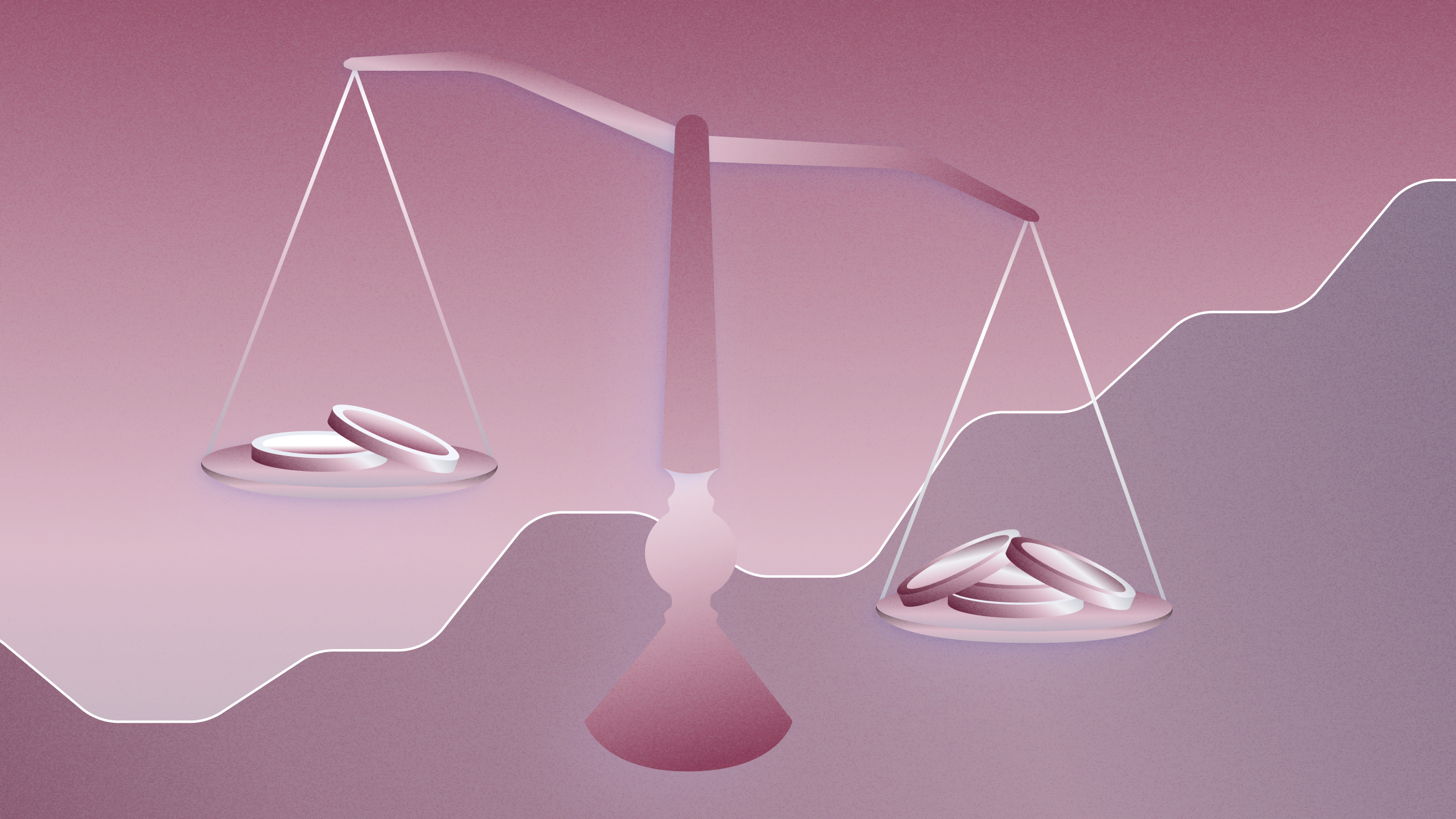How to do a cost-benefit analysis

Former product manager turned content marketer and journalist.
When you’re making a decision, what tips the scale for you? Do you make a list of pros and cons, and move forward if the pros outweigh the cons? Or do you go with your gut?
In the startup world, your decisions may have far-reaching implications. Everything from hiring to raising capital to implementing tools for your team is tied back to some business objective.
There’s a lot of benefit to methodically weighing your options. A cost-benefit analysis helps you think through the potential outcomes. It can help you decide whether or not to move forward — or how you might prioritize a project against another.
What is a cost-benefit analysis — and why should you do one?
A cost-benefit analysis quantifies the total costs and potential rewards of a business decision. If the benefits outweigh the costs, you’ll probably want to proceed (assuming you have access to the necessary capital for any initial costs).
Completing a cost-benefit analysis aims to put some data behind your decision-making. Undoubtedly, you’ll need to make some assumptions and projections (which we’ll get to in just a bit). However, with data, you’re giving some weight to your pros (benefits) and cons (costs), rather than simply making a list.
A cost-benefit analysis makes the most sense for large projects or investments requiring substantial resources. A thorough analysis looks at a lot of factors and can take time to prepare, which is a resource cost by itself. A subscription for an app that will increase your team’s productivity doesn’t need a cost-benefit analysis. An investment in an enterprise-grade solution that may take years to achieve ROI, on the other hand, may give you more pause and warrant a more involved assessment.
The more systematic you can be with your cost-benefit analyses — when and how you do them — the more confidence you’ll feel with making decisions in the future.
A 4-part framework for conducting a cost-benefit analysis
There are a few basic steps you should follow when conducting a cost-benefit analysis, no matter the project or investment.
Throughout these steps, you’ll need to quantify factors that may not have a hard number. For example, how do you measure an increase in employee satisfaction? You’ll need to have some way of assigning a value, whether it’s a point system you create, potential time savings, or other organizational impact.
Ultimately, you should gather your findings from this framework into a simple report. You can share it with other decision-makers, or keep it with the project documentation.
1. Project scope
To start, you’ll need to outline the specifics of your project or investment: what problem are you trying to solve, and what are your goals?
It might be something as straightforward as adding a new director-level role to the team, or something more involved, such as selecting and implementing a CRM.
Just as important is to outline what’s not included in your project scope. As any product team knows, scope creep is real. You might start with a website overhaul and end up tackling brand messaging. If you allow your scope to expand, your cost-benefit analysis won’t be accurate.
In your scope, you’ll want to outline the expected timeline, resources needed, and any limiting factors (such as budget). You’ll also want to identify any decision-makers, key stakeholders, and the people who will help you gather information to analyze costs and benefits. Price, for example, may come from getting quotes from several outside parties.
2. Direct and indirect costs
Any project or investment will have both direct and indirect costs.
Your direct costs may be a purchase price, salary, or other investment in a resource. You’ll want to think about upfront costs as well as any ongoing costs. Indirect costs could be a larger electric bill needed to run additional equipment.
Then you’ll have costs that are even harder to measure, such as the impact on your customers or employees. You may have opportunity costs associated with waiting if the project can make you more competitive. Or you may face potential legal or regulatory risks if you don’t act in a timely manner.
3. Benefits — and what they’re worth
Next, you’ll list out all the benefits and their impact on the organization.
Benefits are even harder to measure than indirect and intangible costs, because (most of the time) they’re based on an assumption you have. You assume that you’ll have increased revenue or decreased churn. You assume that you’ll have improved customer or employee satisfaction.
Make sure your assumptions are rooted in some type of realistic expectation. You might know, based on connections to others in the industry, that an HR hire will have an impact on employee satisfaction. You have a good reason to believe that you’ll see similar results, even though it’s an assumption.
If you know that a benefit is “time savings,” it’s a bit easier to quantify. You can estimate the amount of time saved, multiplied by the impacted employees and their associated salaries. If you’re considering a product or solution, a salesperson can help you calculate ROI.
While benefits can’t always be measured in a known quantity, you can start with the potential number of employees or customers impacted, the revenue potential, and/or the timeframe in which you’ll start to see results.
4. Comparing the costs and benefits
The formula seems to compare costs and benefits seems straightforward. Moving forward with the project makes sense if the benefits outweigh the costs.
But both your costs and your benefits likely contain some unknowns. Maybe you’ve added a placeholder of some kind for “employee satisfaction,” — and now you need to compare that to the cost of hiring an HR director.
You can assign a monetary value to the unknowns to help with the comparison, but they’re still unknowns. To help this process, think about how confident you are with your assumptions. Do you have some data to back up the dollar amount associated with a particular benefit? Or was it mostly a guess?
When you consider the risk that your assumptions might be wrong, you’ll think about your comparison differently. The potential benefit might be huge (such as increasing market share), but it’s not a guarantee.
How to calculate cost vs. benefit
To calculate cost-versus-benefit (CVB), you have to quantify all of your costs and benefits within a specific project.
For example, your costs might include:
- Any upfront investments, such as equipment or software
- Operational costs, such as supplies or maintenance
- Labor costs, such as staff salaries or contractors needed
Your benefits might include:
- Increased sales revenue
- Decreased operational costs, due to time saved or improved efficiency
You also have to consider intangible costs and benefits, like lost productivity while you’re working on the project or increased customer satisfaction once the project is completed. Though these are hard to quantify, you have to assign a dollar value in order to calculate CVB.
Formulas for a cost-benefit analysis
To complete a cost-benefit analysis, you need to calculate three numbers: Present Value (PV), Net Present Value (NPV), and the CBA ratio.
If the CBA ratio is greater than one and the NPV is a positive number, then the value of the project outweighs the costs.
Calculating present value (PV)
Your present value is a calculation of the value of a cost or benefit over a period of time.
The formula is:
PV = FV / (1+r)ⁿ
Where:
- PV = Present Value
- FV = Future Value
- r = Discount Rate
- n = Number of periods
The discount rate is a rate you apply if you expect the value to change over time, such as a depreciation rate of 20%.
You’ll apply present value to both costs and benefits.
Calculating net present value (NPV)
Net present value calculated as:
NPV = PV of Benefits - PV of costs
You want this number to be positive. If it’s not, then the project costs more over time than the benefits you’ll receive.
Keep in mind that you’ve already applied a discounted rate and the life of the project (such as five years) to the PV calculation.
Calculating the CBA ratio
The CBA ratio is calculated as:
CBA ratio = PV of benefits / PV of costs
If this number is higher than 1, then the benefits outweigh your costs.
Example calculation
Let’s say you’re considering the purchase of new equipment to produce products for your ecommerce store. While it has an upfront cost to license and annual maintenance fees, you expect that using the product will boost your team’s productivity to create products and increase sales. The equipment should last three years and then you’d want to upgrade to something newer.
Here are the numbers in this example:
- Purchase price: $100,000
- Annual maintenance costs: $10,000
- Expected useful life: 3 years
- Expected annual increase in sales: $60,000
- Expected time savings per team member: $5,000
- Number of sales team members: 10
- Discount rate: 10%
In this example, the “time savings per team member” is an intangible benefit. You’d have to look at the number of hours you expect each sales team member to save, and the average salary per team member.
1. Calculate the annual benefit
Annual increase in sales = $60,000
Annual increase in productivity = $5,000 x 10 = $50,000
Annual net benefit = $60,000 + $50,000 - $10,000 (annual maintenance costs) = $100,000
You can expect an annual financial benefit of $100,000 per year.
2. Calculate the present value of your benefits
To calculate the present value of your benefits, you’d look at the initial licensing term (three years) as your “r” value in the PV formula.
You’ll apply a discount rate, assuming you don’t get as much value in future years as you do in the first year.
In this example, we’ll apply a 10% discount per year.
Year 1 PV of benefits = $100,000 / (1 + 10%)1 = $90,909.09
Year 2 PV of benefits = $100,000 / (1 + 10%)2 = $82,644.62
Year 3 PV of benefits = $70,000 / (1 + 10%)3 = $75,131.48
When you add all of those together, your present value of your financial benefits is $248,684.19
3. Calculate the present value of your costs
Your costs in this example will be the upfront cost ($100,000) plus your annual maintenance cost ($10,000) over the period of three years. You’ll use the PV formula again, applying the discount.
Year 1 PV of costs = $10,000 / (1 + 10%)1 = $9,090.90
Year 2 PV of costs = $10,000 / (1 + 10%)2 = $8,264.46
Year 3 PV of costs = $40,000 / (1 + 10%)3 = $7,513.14
The present value of costs is your upfront cost ($100,000) plus the sum of your maintenance costs, or $124,868.50.
4. Calculate NPV and CBA ratio
NPV is your PV benefits ($248,684.19) less your PV costs ($124,868.50) or $123,815.69.
Your CBA ratio is your PV benefits ($248,684.19) divided by your PV costs ($124,868.50) or 1.9.
Since your NPV is a positive number and your CBA ratio is greater than 1, there is a benefit to investing in this equipment, according to the analysis.
You can download our cost-benefit analysis worksheet and plug in the numbers to do your own analysis.
Cost-benefit analysis use cases
Cost-benefit analysis can be applied to a lot of departments and scenarios. For example, you might consider:
- Evaluating hiring decisions by looking at the costs to hire within HR (advertising, internal time spent), the salary of the new hire, and the benefit to a team by increasing bandwidth
- IT investments such as the cost of equipment over its lifetime usefulness and how it will benefit your team
- Product or feature launches by looking at the time spent to develop, any materials or equipment needed, and the potential impact on sales or customer satisfaction
The limitations of a cost-benefit analysis
While there is a lot of benefit to cost-benefit analysis for decision-makers, it also has limitations. Determining the value of intangible costs can be tricky. How can you measure the cost of customer satisfaction, for example? Does it result in referring new business? Does it decrease churn? You may have to rely on a lot of assumptions.
Projects can also have unexpected scope increases. A new feature that initially seemed profitable may lose its profitability as you spend more time on it or incur unexpected costs.
The more limited your data, the less accurate your cost-benefit analysis. If you rely too heavily on your assumptions, you might end up with mixed results when you start a new project or initiative.
Here’s how CBA compares to other common analyses, such as SWOT and ROI.
Feature | Cost-Benefit Analysis (CBA) | SWOT Analysis | ROI Calculations |
|---|---|---|---|
Purpose | Compare costs and benefits to decide if a project/initiative is worthwhile | Identify internal strengths/weaknesses and external opportunities/threats | Measure financial return compared to investment |
Focus | Monetary and non-monetary costs vs. benefits | Strategic planning, competitive anlaysis | Profitability and efficiency |
Output | Net Present Value (NPV), CBA ratio | Qualitative list of strengths, weaknesses, opportunities, threats | Percentage return on investment |
Timeframe | Short- to long-term, depending on the project | Present and near future (strategic snapshot) | Short- to medium-term (until ROI is realized) |
Limitations | Accuracy depends on data quality and assumptions | Subjective, may lack measurable outcomes | Ignores non-financial benefits and broader impacts |
Making a decision and reviewing your assumptions
Cost-benefit analysis would be a lot easier if you could predict the future, wouldn’t it? Even with the unknowns, it’s still a healthy exercise. It forces you to list out costs you may not have considered or benefits that seem great on paper, but don’t stack up against the cost.
Over time, and as you make more complex decisions, you can revisit your past cost-benefit analysis reports and look for ways to improve. You’ll collect more data the longer you’re in business — about your employees, customers, product strategy, and operations.
For a young startup, many decisions may feel risky in the beginning. But they’ll get easier in the future, especially as you get more experience doing a cost-benefit analysis.
Keep in mind that a cost-benefit analysis is a good first step to understand what to prioritize project and investment-wise. From there, though, it’s just as important to have a framework for feature prioritization when planning your roadmap so that you can stay focused and make sure that your company is putting resources towards its most impactful projects.
FAQs
What is a good CBA ratio?
A good cost–benefit analysis (CBA) ratio is anything greater than 1.0, meaning the benefits outweigh the costs. The higher the ratio, the stronger the likelihood that the project or initiative will deliver value compared to expected costs.
Can you use CBA for HR?
Yes, CBA can be applied to HR and hiring. By weighing the financial and non-financial costs (like training time, compliance work, or software upgrades) against the expected benefits (such as reduced turnover or higher productivity), HR teams can determine if they want to make changes.
What are the risks of bad data with CBA?
Bad data in a cost–benefit analysis can lead to poor decisions, wasted resources, and overlooked risks. You might start a project thinking it is financially beneficial, only to find that your incur additional costs or strain your internal resources.
About the author
Anna Burgess Yang is a former product manager turned content marketer and journalist. As a niche writer, she focuses on fintech and product-led content. She is also obsessed with tools and automation.
Related reads

Should you launch on eBay? A viability checklist by product category

The 8 most common inventory mistakes (and how to fix them)

What your first consulting retainer agreement should cover — but often doesn’t
